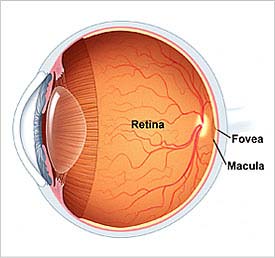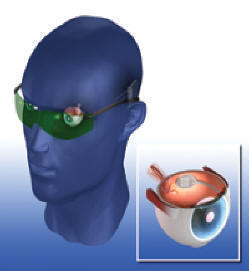Examples of retinal disorders are:
- Retinal detachment - a medical emergency, when the retina is pulled away from the back of the eye
- Macular pucker - scar tissue on the macula
- Macular hole - a small break in the macula that usually happens to people over 60
- Floaters - cobwebs or specks in your field of vision [2]
 [3]
[3]
 [1]
[1]